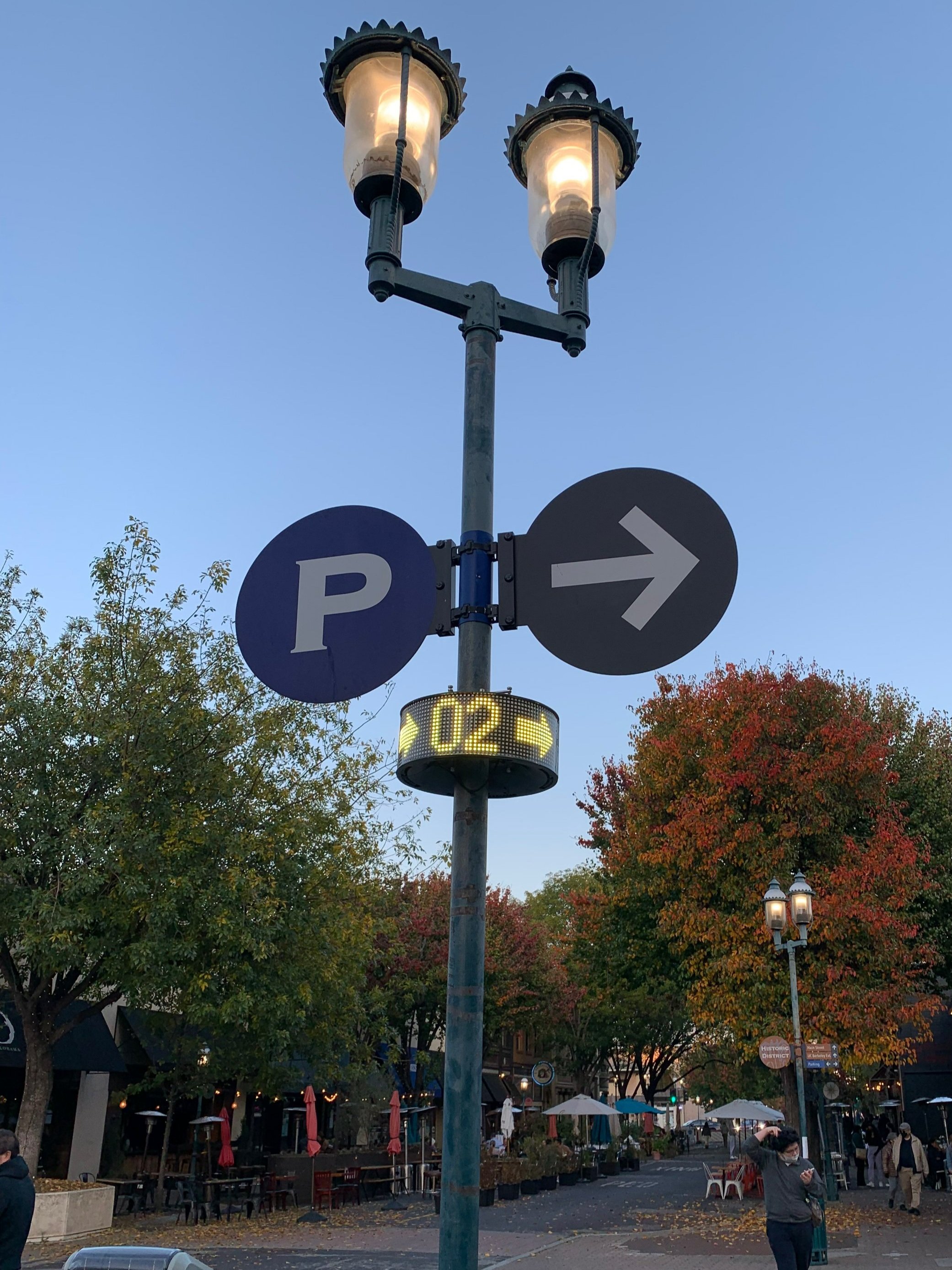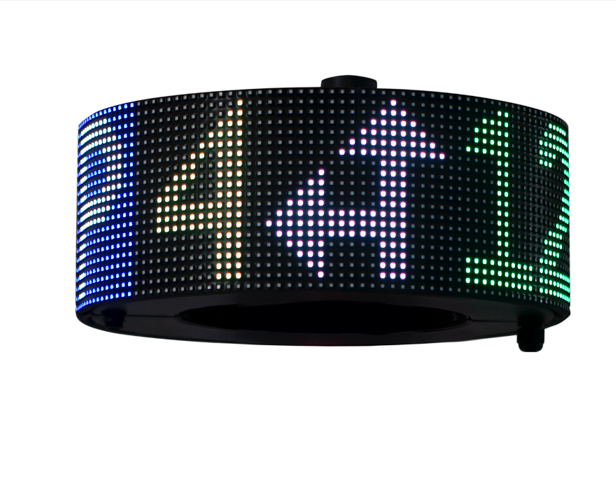Atlanta, Georgia and Munich, Germany — 21st July 2022
Cleverciti® announces the Circ® 360 Ultra and Circ® 360 Ultra+, the next generation of its flagship parking guidance product.
This newly updated version of the patented Circ builds on the success of the original with improved features, higher resolution, and more flexibility for customers.
Circ 360 Ultra+
By mounting a Circ 360 Ultra at intersections or decision points, drivers are guided turn-by-turn to available parking spaces— whether on-street, surface lot or a garage. Redwood City, California has a Circ at most intersections in its downtown core, as well as at each surface lot entrance.
Original Circ in Redwood City, providing guidance into a surface lot
“The Circ has allowed Redwood City to provide dynamic parking information to the public while maintaining a small, flexible, non-intrusive footprint. It allows parkers to get a real-time snapshot of the parking availability in an area, minimizing unneeded circling and reducing traffic congestion.”
The Circ 360 Ultra has a 50% higher resolution versus the original Circ, enabling richer graphics and greater clarity in communication to drivers. The display is available in single-height (Circ 360 Ultra) and double-height versions (Circ 360 Ultra+), allowing for additional messaging. With this real estate, clients can now use the Circ to communicate detailed information like bus or train arrival times, reinforce neighborhood branding, or sell advertising space to help fund parking operations.
“We have already proven we can reduce parking search times by 45-55% through deploying the Circ for turn-by-turn parking guidance,” said David Parker, CEO of Cleverciti. “The Circ 360 Ultra brings our driver communication capabilities to the next level.”
The Circ 360 Ultra combines the above improvements with the best of the original Circ. Key features include:
Unique, patented 360° display that provides real-time turn-by-turn guidance for drivers helping to reduce the time spent searching for parking, and in turn, emissions.
50% higher resolution.
Two sizes (single and double height) for full flexibility of content displayed.
Remotely managed & monitored 24/7, like all Cleverciti devices.
Display parking occupancy data for spaces managed by the Cleverciti platform; option to pull data from any other source (such as train arrival times).
Ability to change templates on-the-fly through the Cleverciti Cockpit to update the guidance plan as needed— such as for special events.
Dimmable to ensure maximum readability while minimizing light pollution (Automatically or by schedule).
Mounted onto and powered by existing infrastructure, facilitating easy installation whilst integrating seamlessly into the streetscape.
The Circ 360 Ultra will be demoed live next week (July 24-27) at IPMI, New Orleans at Cleverciti’s Booth— #720





























